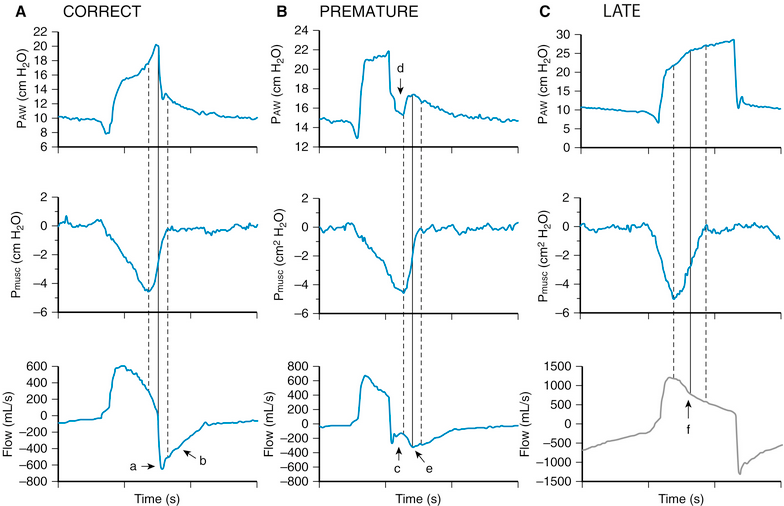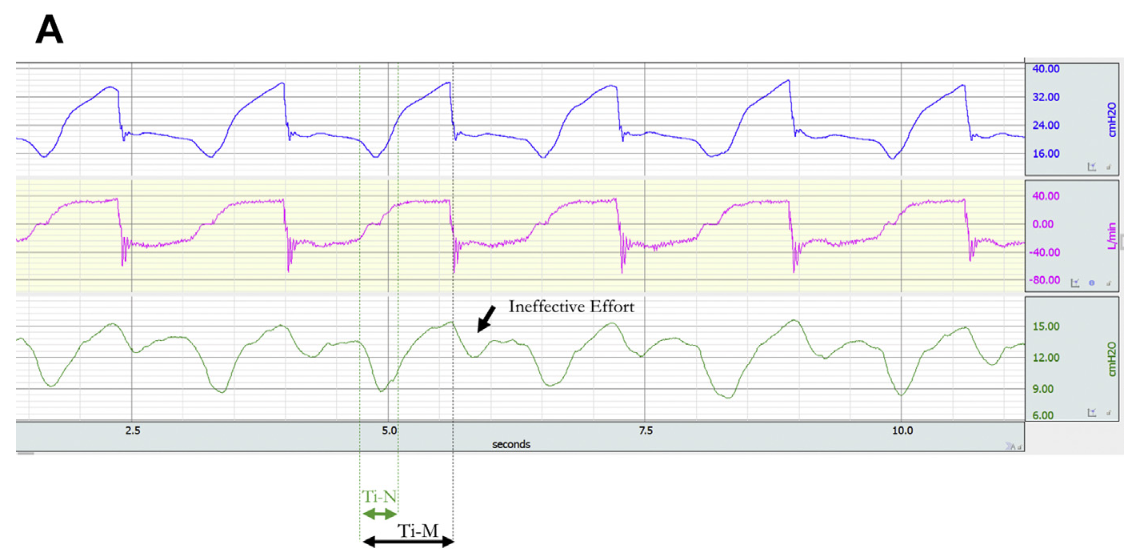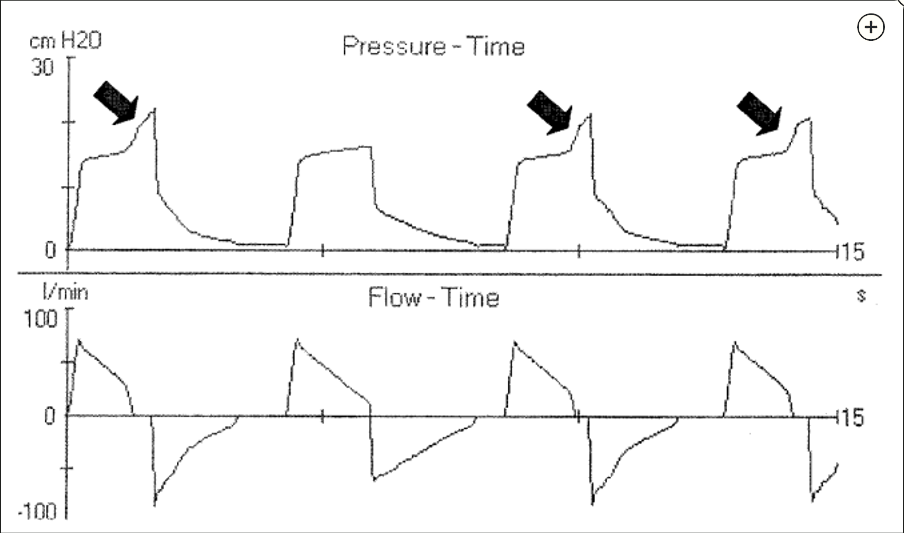delayed cycling caused by low trigger and high inspiratory time
- related: understanding of ventilators
- tags: #literature #icu

Pressure vs time (top) and flow vs time (bottom) ventilator graphics demonstrating delayed cycling asynchrony. Arrows indicate characteristic abrupt increase in airway pressure and expiratory flow near the end of the mandatory breath.
With delayed cycling asynchrony, the inspiratory time of the mandatory breath may be longer than the patient desires; thus, ventilator cycling from inhalation to exhalation is “delayed” relative to the patient. The patient begins exhaling near the end of the breath delivery, generating additional positive thoracic pressure that produces a characteristic abrupt peak in pressure and early transition to expiratory flow (Figure 5, arrows) while the ventilator continues in the inspiratory phase (green tracings).



- On pressure-time waveform (top), the patient makes active expiratory efforts leading to an increase in the pressure
- The expiratory valve is still closed at this time
- On flow-time graphic (bottom), note that there is no flow for a short time between the end of inspiration and start of expiration (red arrow).
- Suggests inspiration is shorter than the inspiratory time on the ventilator.
- Delayed cycling occurs when the ventilator’s set inspiratory time exceeds patient’s neural inspiratory time.
- The patient generates active expiratory effort prior to reaching the breath-cycling criterion established by the ventilator.
- There is no issue initiating the breaths (as occurs in trigger dys-synchrony), nor does the breath end prematurely (as in double trigger)123